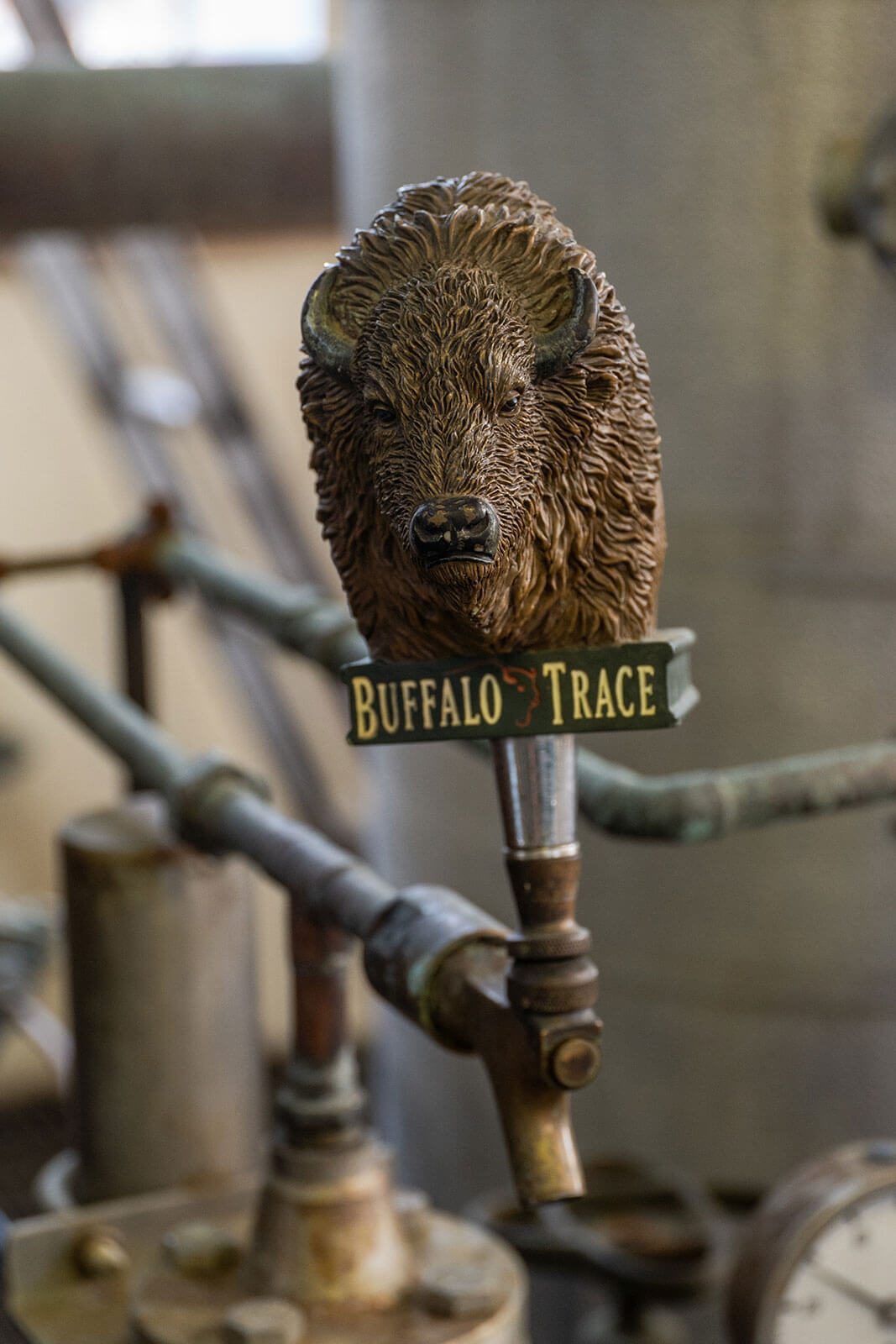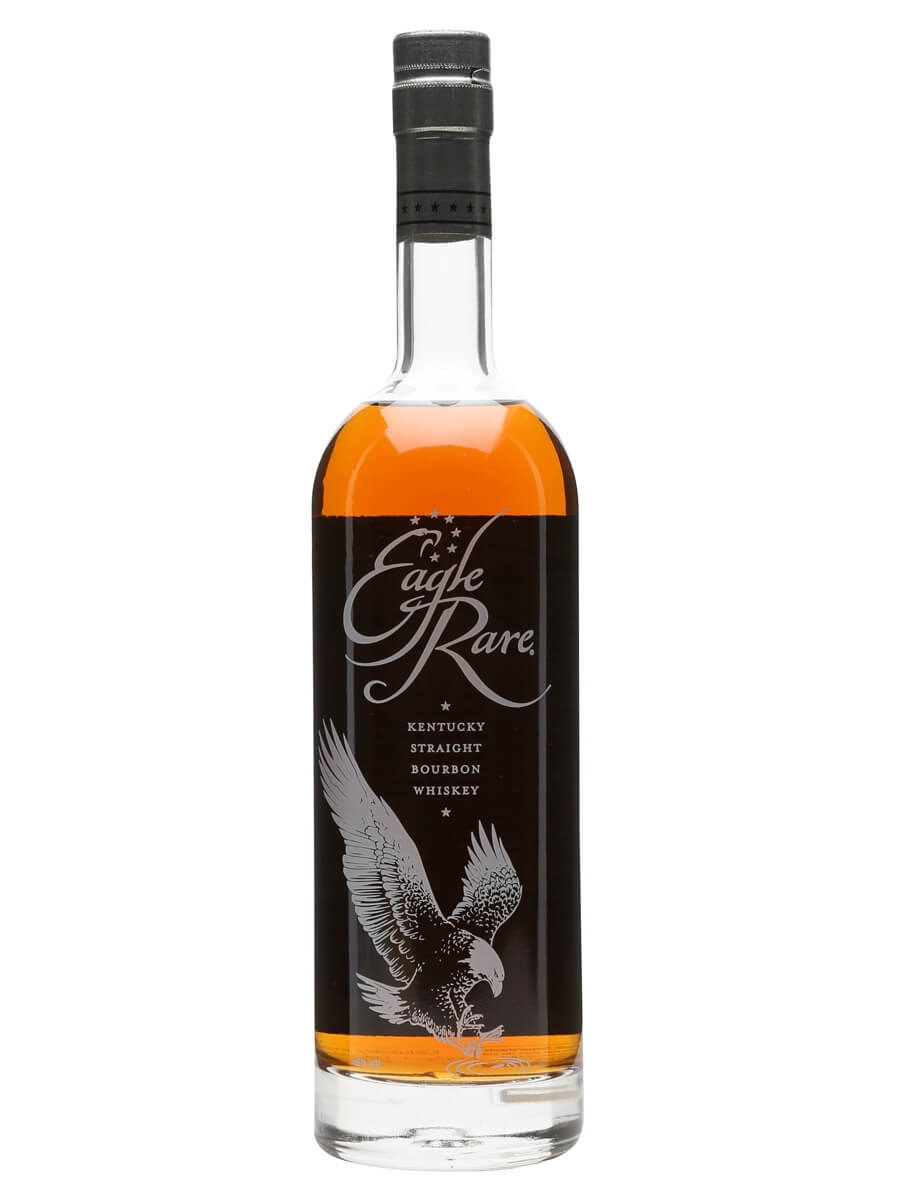by Ken Gargett
My bourbon-loving friends have been uncomfortable for some time. Bottles they could pick up at their favorite stores around the United States for peanuts have suddenly become cult treasures, adored rarities, and extremely highly priced prizes.
I am not talking only about the truly meteoric rise of Pappy van Winkle (although I am always curious to meet someone who has seen a meteor rise), but many much-loved brands. Aged bourbons are now expensive and in great demand. My bourbon-loving friends are not happy.
When I was a little younger, bourbon was seen as little more than a fairly ordinary spirit whose main role was the delivery and ingestion of alcohol. As more and more devotees have discovered the joys and complexities of aged bourbon, things have changed. Quickly and for the better – unless you are one of those who has seen a favorite disappear into the maze of demand and skyrocketing prices.

Buffalo Trace bourbon tap
One of the most famous bourbon distilleries of all is Buffalo Trace and it is a prime example of all this. The Buffalo Trace story started centuries ago and with a famous name: Daniel Boone, who rode through Leestown in 1771 as they say “on the buffalo trace” more than 20 years before Kentucky even became a state (“buffalo trace” is the name given to a crossing made annually by herds of buffalo across the Kentucky River).
Buffalo Trace history
Names more akin with bourbon worked on the site over the years: Taylor, Blanton, and George T. Stagg among others.
When that scourge of humanity, Prohibition, struck in 1919, the long-established distillery was granted a dispensation to produce medicinal whiskey, and even new whiskey for the last four years before repeal in 1933. This means that it can claim to be the longest operating distillery in the States, although I gather that Burk’s Distillery may dispute this. No matter, both distilleries have a wonderful history.

Buffalo Trace Distillary
Among recent highlights, Blanton’s, the world’s first single-barrel bourbon, was introduced in 1984 and, with a change of ownership in the meantime, Buffalo Trace in 1999. The current owner since 1992 is the Sazerac Company, which now offers the world a wide range of great-value bourbons and whiskies and brilliantly aged bottles as well.
The number of awards Buffalo Trace has picked up over the years is mind boggling, even winning Distillery of the Year an amazing seven times. In other words, the people running this company really do know bourbon and whiskey.

Inside the Buffalo Trace Distillery
And for those obsessed with Pappy van Winkle, these guys make that as well under arrangement with the family.
The 5 Buffalo Trace Antique Collection bottles
To feature some of the distillery’s best, there is an annual release of what is known as the Buffalo Trace Antique Collection. Friends in the States tell me that they cultivate good relations with local stores for many years in the hope of getting a bottle or two. Others enter lotteries – bottle shops got sick of the abuse from disappointed customers who missed out, so they brought in lotteries to avoid this.
When you consider that the latest release of Eagle Rare 17-Year-Old (with a price tag around a grand, though apparently considerably more in the States as many flip their bottles immediately after getting them to pick up a tidy profit) had an allocation of an entire 15 bottles for all of Australia for the year, you start to realize how difficult it can be to source some of these gems. The rest are usually a little cheaper, though they can range between AUD$600 and AUD$1200 a bottle.
The five bottles that form the Antique Collection 2019 are the Eagle Rare 17 Year Old, George T. Stagg, Sazerac 18 Year Old (production of which leaves the Eagle Rare in the shade, allowing for an Australian allocation of 45 bottles), Thomas H. Handy rye, and the wonderful William Larue Weller.
But first, even though it will set you back only an embarrassingly low AUD$60, the standard Buffalo Trace is worthy of mention. It is a cracking bourbon and great value for the money.
Around eight to ten years of age and a barrel selection, for me, it offers nutty, vanillin and caramel notes, lovely supple texture, and is a little fiery on the finish. A delicious and impressive bourbon with good length. If you cannot get your hands on any of the Collection, you will be well served with this. And much wealthier after the event.

Buffalo Trace 10-year-old Eagle Rare
While there is also a ten-year-old Eagle Rare, the 17-Year-Old is the ants’ pants as my grandmother would say (well, not about a bourbon as she considered any alcohol to be the devil’s tears and certain to lead to eternal damnation – yes, I am a great disappointment to my family).
It is something special, which is no surprise given that the loss of the famous angels’ share due to evaporation was a staggering 89 percent. Florals, cinnamon, spices, tobacco leaf, orange rind notes and more – there is serious underlying power but an elegant spirit to the fore, which dances across the palate. A hint of smoke. Wonderfully complex and simply delicious.
There is a lovely description of the George T. Stagg, “beyond enormous.” At 64.6 percent and with 15 years under its belt, hard to argue. Hazelnuts, old teak, vanilla, florals, petals, honeycomb, toffee, and more. A barrel selection from 240 barrels, it has around 16 years of age on it. Great length and, yes, enormous power.
The Sazerac 18 Year Old was perhaps my least preferred in the range, but with such a high bar set it is still a very fine spirit. For me, dry herbs, iodine, oyster shell notes, but it just did not have the length on the palate of the very best of these.
The Thomas H. Handy Sazerac rye is named after the New Orleans bartender who first used a rye whiskey when making a Sazerac cocktail. It is an unfiltered rye whiskey, which is bottled directly from the barrel in the manner that has been in operation for more than a century. Aged for more than six years and at a cask strength of 64.4 percent, it can’t be ignored. Glacé orange, milk chocolate, honeycomb, and nuts. This is a lovely complex spirit with some fire on the finish. Another cracker.
For some, the wonderful William Larue Weller is even more impressive than the Eagle Rare. Aged more than 12 years, it is undoubtedly complex with great length. Weller was responsible for the first wheated bourbon, and this is a deserved tribute. Dark oranges, there is an Armagnac-like note, hints of chocolate, almonds, and old teak.
For me, most of these opened up with a dollop of water (without wishing to raise the ire of some readers, I will often add half an ice cube – be fair, I live in Queensland) and this was no exception. Loved it. Better than the Eagle Rare? Different, and I’d happily drink either (even more happily, drink both).
On the day, I gave it to the Rare by the proverbial bee’s appendage.
This will all have been preaching to the converted for many, but if you have neglected great bourbon until now it is time to get on board.
For more information, please visit www.buffalotracedistillery.com/brands/antique-collection.
You may also enjoy:
Yamazaki 12-Year-Old Japanese Whisky: Why Pricing Has Gone Through The Roof
Chichibu Whisky: The Japanese Version Of Pappy Van Winkle
Lagavulin 16-Year-Old Whisky And Why Ron Swanson Was Right On The Money
Last Drop 1971 Blended Scotch Whisky: Is This The World’s Most Exclusive Whisky?
Leave a Reply
Want to join the discussion?Feel free to contribute!





















































Forgive me, I have to quickly jump in and correct myself as I have committed the cardinal sin of being a touch too liberal with the use of the term, ‘bourbon’. To be technically correct, bourbon is made from a mash of at least 51% corn, and of course, must be made in the United States. It can be no more than 62.5% alcohol, at the time it goes into the wooden casks to age. If it is to be called ‘straight bourbon’, it must be aged for at least two years.
Rye, on the other hand, must be at least 51% rye. As with bourbon, it must be aged two years before being called “straight.”
We have examples of both here. Thomas Handy and Sazerac should have been detailed as rye. Apologies for any confusion.
I have 4 bottles of the Antique collection and need the Sazerac 18 to complete my collection of all 5 bottles. But will sell what i have. [email protected]
Why don’t you just leave it on the shelf for someone that would like to drink it? Are you only interested in making a profit? Do you not have a job?